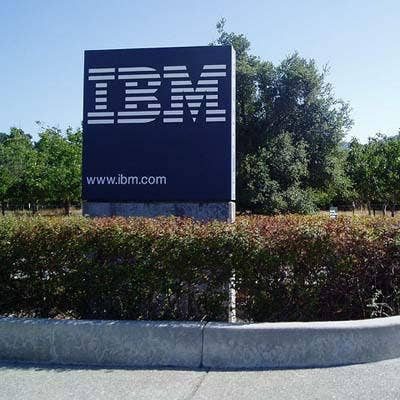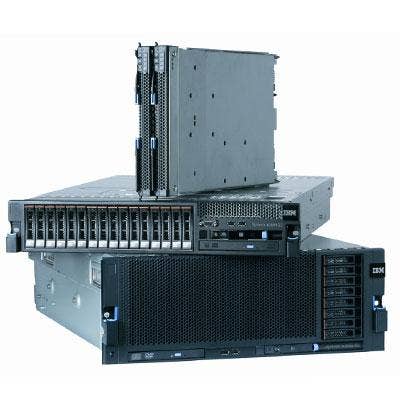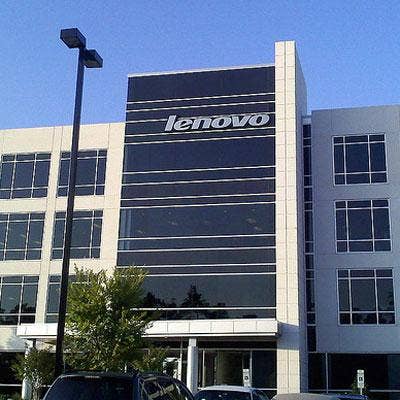16 IBM Partner Imperatives From Big Blue's Channel Chief

Q&A With IBM's Marc Dupaquier
Marc Dupaquier, general manager of global business partners at IBM, sat down with CRN this week during the IBM PartnerWorld Leadership Conference in Las Vegas to answer a broad range of no-holds-barred questions.
The newly appointed global channel chief took the hot seat on hot-button partner topics such as IBM's x86 hardware, which is likely headed to Lenovo before the end of the year, how IBM direct really feels about being required to co-sell with the channel, and how exactly partners can start making money with its recently acquired $2 billion SoftLayer acquisition.
The official theme of the week was "transforming for growth," Dupaquier said. Here are 15 imperatives Dupaquier said partners must execute on if they are to thrive and transform in the years ahead.

1. What are IBM's biggest channel challenges in 2014?
The IBM challenge today is transforming the partner community from selling boxes to selling services. Partners need to change the relationship with customers. They need to think of them less as companies they supply purchased products to and instead as clients that consume services. For a long time, partners sold a box or a license. We are moving them to a new and different approach around cloud, data and engagement.
But this challenge isn't really a challenge. Selling cloud services is relatively simple and easy for a business partner. We have found they get it rather quickly. Business partners get it. Now it's about executing. If we fail it's the inability to execute with speed because we have begun the journey to take us where we want to be with partners.

2. What are the biggest partner inhibitors to success in cloud?
The No. 1 inhibitor we see with partners is a lack of a sales plan and having sales people that are versatile in selling services. Partners need to realize that the shift away from selling a box or a software license to selling a service with reoccurring revenues is a good bet.
What trips up some partners is that the upfront annuity fee can be relatively small, but what they need to remember is it will payout over time. You are still selling boxes, but now you're also selling cloud services. You make less revenue, but eventually you will build a stream of revenue, and in three or four years that becomes a very significant stream for you.
Look, the No. 1 issue with resellers is going month to month without, so when you have a bad month, you have no cash. But when you rely on annuities, you have 13, 20, 30 sources of revenue streams coming in each month. That's the model with SoftLayer.

3. How do you make money with SoftLayer?
You can make money as a reseller or through referral fees. Referral fees paid to partners are 10 percent of the deal year one, second year is 8 percent, and 6 percent thereafter. Partners can also embed SoftLayer into their own solution as a white label and sell it as their own cloud services. SoftLayer has 120 software products delivered as a service straight from the cloud.
Reps are finding it easier to sell cloud services. Why? Because the No. 1 issue with clients now is capital expenses. So when you make the sale a service expense and smaller stream, it's easier to get it. The gap is not as hard as it used to be.

4. How do you grow your partner community to the type of partners you want, just as you lose the ones that aren't aligned with IBM to Lenovo?
We spent a ton of time looking at our partners, their skills, and thinking about the consequences of divesture. If the partner is only a reseller of technology -- and not much more -- around it he will become a reseller for Lenovo.
We believe many of those x86 partners will become resellers of SoftLayer technology. We are reaching out to partners right now and will announce programs to reach out to even more partners and make sure they are able to drive this type of new cloud engagement.

5. How does IBM go beyond its existing partner base and find new partner blood that reflects the direction IBM is headed?
We are looking at creating new relationships by examining partner solution type and where we have gaps and where we are deficient. We will start to engage with those partners that are complimentary and open new relationship doors. With one new relationship there is a chain of other potential partners in a business ecosystem. I have found if you open the doors a bit more with partners, say in health care and storage, you will begin to engage and find more partners that we never heard of.
I believe that diversifying the partner community is an evolution that will take years. New business partners bring more partners. You are going to see more of that happening.

6. August 2013 IBM's Systems and Technology Group announced it was moving to a co-selling model requiring the STG sales force ... to work with an IBM partner in order to get paid when inking a deal with a customer. How has the impacted engagement with the channel?
I can't put numbers behind it because it's relatively new. We are truly activating it now. The co-sell model began Jan. 1. Part of that announcement also included increased margins on Power and storage sales. Those incentives began in September and have been a big growth driver.

7. How have direct and indirect gotten along under over the past month in that co-selling relationship?
It's hard for direct sales people to understand why working with the channel can benefit them. By the very nature of having direct and indirect, they don't work in harmony. The smart sales reps get it. Others just see a deal and the 20 to 25 percent of margin going away, so they don't like it.
Strategic IBM sales reps know it doesn't matter if they lose some margin because working with a partner generates three more deals instead of just the one you had. More deals equals more revenue.
That's why we move to channel neutrality. In software and STG, we have channel neutrality. In the software group, if you sell direct or business partner, you get the same type of compensation. In STG when you sell without a business partner, you get no compensation.

8. Which is worth more: an IBM direct lead deal or a partner lead deal?
Where we have a well-thought out and well-compensated channel strategy, we do better than places where we go direct. That's total revenue.
You can't look at it deal by deal. Using that math, you would only sell direct because IBM keeps the entire margin. You make more margins selling direct. But if you only sell direct, you get less support from the business partner. Then, you get fewer deals and you get less revenue.
The reason you use channel is you have more leverage in a deal and can get more business. You make less margins per deal, but you make more deals and go deeper and wider within a company. That's the value of the equation. It's a no brainer.

9. What percentage of IBM sales goes through the channel?
Total business sold through the channel is 20 percent. If you take out what is not sellable through business partners such as large system integrations, [then] contracts and large services partners drive a lot more revenue than 20 percent. Within STG, we are 60 to 70 percent. Software is 31 percent. Partners have a very big piece of the revenue. It depends on total revenue; it is 20 percent. That includes everything it sells including the big contract.

10. How big of a piece of IBM's business is System x that's likely going over to Lenovo and what does that mean for partners?
X86 is now 85 percent sold through business partners. That's $5 billion with $4 billion in business going through the channel going away. I sell IBM's Intel business to Lenovo and this all goes away. Not really. In reality, it's not like that. I'm increasing IBM products. SoftLayer will be huge for us this year. We will drive a significant number of partners to SoftLayer and we will have thousands of new sales.

11. Is SoftLayer the biggest new opportunity for partners?
This is certainly a pretty big one. This is one where we engage massively with our business partners and forge new relationships with independent software venders. We have a goal here to scale SoftLayer through business partners.
Today we are in stage one with scaling SoftLayer. It's the No. 1 thing business partners want to talk about with me. Of the 600 firms here, I guarantee the 600 firms want to leave here with a SoftLayer contract. And the 600 partners we met this week at PartnerWorld, coming here [to Las Vegas], are just the tip of the iceberg.

12. How is SoftLayer being received by the partner community?
It's faster than I've seen anything grow before here at IBM. ... I knew it would grow fast; I never knew it was going to grow it that fast. ... And I have to throw more bodies at it. ... Months ago we started to engage with SoftLayer and we said, "Hey, listen this is going to be popular." The folks at SoftLayer expected 10 to 20 percent growth. We said it will be closer to 1,000 or 2,000 percent. We said, "You guys don't get it."
Before IBM bought them, SoftLayer had two people in channel. That's two people in the world. I told them, "Guys I'm about to bring you 20,000 business partners. Do you get it?" How will two guys help 20,000 customers? We are now bringing in hundreds of people into the SoftLayer business. I guarantee they get it now. ... They are getting more love than they know what to do with.

13. How are you going to ramp up SoftLayer?
As you heard, we are building 40 data centers around the world -- an investment of $1.2 billion. We are engaging with value-added distributors. Right now, we are going after signing clients. This is a game where you sign clients and build revenue. We didn't invest $3 billion into SoftLayer to get a small return on our investment.

14. Do you have the right channel and how long is it going to take to enable your channel and have an aligned channel?
The theme of the meeting is transforming for growth. So if I was not convinced I had the right partner community already, I wouldn't pick this title. I wanted to send a message to partners that they have to transform. If they don't transform they will not be able to follow us. By the way, we have the same exact problem with IBM's sales force. We need to transform together.
The IBMer, just like the channel, have been operating in a specific model for years. Now we are throwing at them some layer of discomfort by design. I spoke to a number of business partners. They were impressed by the strategy and overwhelmed by where they need to start. That's exactly where I want them. I wanted them to have discomfort and hammer home the point they need to transform.

15. Talk about enablement that you are creating. How do you rally the troops and get everybody aligned with where IBM wants to be?
It's a big investment for us and it goes way beyond SoftLayer. For our software group and partners, it's the same story as our hardware partners. The software sales reps were very comfortable in a license resell model. Today with SoftLayer, our software reps are exactly where they were 10 years ago -- facing new business model challenges.
But our software partners, instead of selling licenses, need to sell cloud services. And IBM sales are like "what's happening and how do I do this." We have to educate everyone on how to do this.

16. Because of the pending sale of IBM's X86 business to Lenovo, some partners are asking if they are at the right conference. Your thoughts?
I disagree. Business partners mostly selling System X will become Lenovo partners, and they will have a smooth ride there.
It's not the same sale; it's a different sale. In the old days, you buy a box and run your applications. You can still do that, but the fastest, cheapest ay to do it now is put your application on an Intel box in the cloud. It's the same value proposition, and it's easier to sell because your customer doesn’t need the approval of a capital expense. It's just operating expense; you can get it up and running in the same day.